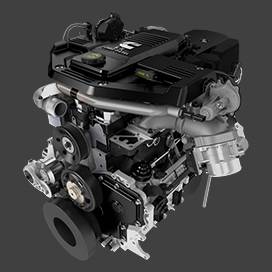Dec . 24, 2024 19:25 Back to list
Understanding the Components and Functionality of Brake Drums in Automotive Systems
Understanding Brake Drums A Critical Component of Vehicle Safety
Brake drums are vital components in the braking systems of many vehicles, playing a crucial role in ensuring safety and effective stopping power. Understanding their functionality, design, and maintenance can help vehicle owners and automotive professionals make informed decisions about their vehicle's performance and safety.
What is a Brake Drum?
A brake drum is a cylindrical component that houses the brake shoes in a drum brake system. When the brake pedal is pressed, hydraulic pressure forces the brake shoes against the inner surface of the drum, creating friction that slows down or stops the vehicle. Unlike disc brakes, which use a rotor and caliper system, drum brakes are typically found on the rear wheels of vehicles, although they can also be used in the front.
The Design of Brake Drums
Brake drums are typically made of cast iron or aluminum, materials chosen for their durability and ability to dissipate heat. The internal surface of the drum is usually machined to a smooth finish to ensure effective contact with the brake shoes. A well-designed brake drum is crucial, as it must withstand the intense heat generated during braking while maintaining structural integrity.
Advantages of Drum Brakes
Drum brakes offer several advantages over disc brakes, including
1. Cost-Effectiveness Generally, drum brake systems are less expensive to produce and install compared to disc brake systems, making them a popular choice for manufacturers and consumers alike.
brake drum pdf

2. Enhanced Braking Force Drum brakes can provide a more substantial braking force at lower speeds due to the self-energizing effect, which allows the shoes to press harder against the drum as they rotate.
3. Better Performance in Certain Conditions In conditions where water and mud might affect braking efficiency, drum brakes can sometimes outperform their disc counterparts because they are enclosed, protecting the braking surfaces from debris.
Maintenance and Inspection
Regular maintenance and inspection of brake drums are crucial for ensuring vehicle safety. Over time, brake drums can wear out or become warped due to excessive heat. Signs of potential issues include
- Uneven wear on brake shoes, - Pulsation or vibrating during braking, - Increased braking distance.
It is recommended to inspect brake drums during routine vehicle maintenance. Technicians should measure the drum's inner diameter to ensure it remains within manufacturer specifications and look for any signs of cracking or severe wear.
Conclusion
In conclusion, brake drums are a critical yet often overlooked component of many vehicles' braking systems. Their design offers several advantages, but they also require regular maintenance to ensure safe operation. As automotive technology evolves, understanding the various components, including brake drums, becomes increasingly important for both vehicle owners and service professionals. By prioritizing brake system health, drivers can enhance their safety and the safety of others on the road. Whether you drive a classic car with drum brakes or a modern vehicle equipped with the latest braking technologies, knowing how these systems work empowers you to make informed choices about your vehicle’s performance and maintenance.
-
Scania Brake Drums: OEM Quality for Optimal Safety & Durability
NewsAug.16,2025
-
R.V.I: Advanced Remote Visual Inspection for Precision
NewsAug.15,2025
-
Discover HYUNDA: Innovative Vehicles, Equipment & Solutions
NewsAug.14,2025
-
R.V.I: Unlock Advanced Insights & Real-time Performance
NewsAug.13,2025
-
Kamaz Brake Drum: Durable & Reliable for Heavy Duty Trucks
NewsAug.12,2025
-
Heavy Duty Iveco Brake Drum - Premium Quality & Safety
NewsAug.11,2025
